
Christoffel National Park: The Heart of Curacao's Natural Beauty
Discover Christoffel National Park in Curacao: A paradise of lush landscapes, diverse wildlife, and rich cultural heritage perfect for nature enthusiasts and history buffs.
Nestled in the northwestern part of Curacao, Christoffel National Park is a haven for nature lovers and adventure seekers alike. This expansive park covers over 4,500 acres and is home to a stunning array of flora and fauna. With its lush landscapes, towering cliffs, and scenic views, the park offers a serene escape from the hustle and bustle of daily life. One of the park's main attractions is the Christoffel Mountain, the highest point on the island. Hiking to the summit is a rewarding experience, offering panoramic views of Curacao and the sparkling Caribbean Sea. The trails vary in difficulty, making it accessible for both novice and experienced hikers. Along the way, you'll encounter diverse plant species, including rare orchids and cacti, and may even spot the elusive white-tailed deer. In addition to its natural beauty, Christoffel National Park is rich in cultural history. The park encompasses several historic sites, including the Savonet Plantation, one of the oldest plantations on the island. The Savonet Museum provides a glimpse into Curacao's colonial past, with exhibits detailing the lives of the plantation's former inhabitants. Whether you're exploring the rugged terrain or delving into the island's history, Christoffel National Park promises an unforgettable experience.
Local tips in Christoffel National Park
- Visit early in the morning to beat the heat and enjoy cooler temperatures on your hike.
- Wear sturdy hiking shoes and bring plenty of water to stay hydrated.
- Don't forget your camera; the panoramic views from Christoffel Mountain are breathtaking.
- Take a guided tour to learn more about the park's unique flora and fauna, as well as its historical significance.
- Check the weather forecast before your visit to ensure safe hiking conditions.
Christoffel National Park: The Heart of Curacao's Natural Beauty
Nestled in the northwestern part of Curacao, Christoffel National Park is a haven for nature lovers and adventure seekers alike. This expansive park covers over 4,500 acres and is home to a stunning array of flora and fauna. With its lush landscapes, towering cliffs, and scenic views, the park offers a serene escape from the hustle and bustle of daily life. One of the park's main attractions is the Christoffel Mountain, the highest point on the island. Hiking to the summit is a rewarding experience, offering panoramic views of Curacao and the sparkling Caribbean Sea. The trails vary in difficulty, making it accessible for both novice and experienced hikers. Along the way, you'll encounter diverse plant species, including rare orchids and cacti, and may even spot the elusive white-tailed deer. In addition to its natural beauty, Christoffel National Park is rich in cultural history. The park encompasses several historic sites, including the Savonet Plantation, one of the oldest plantations on the island. The Savonet Museum provides a glimpse into Curacao's colonial past, with exhibits detailing the lives of the plantation's former inhabitants. Whether you're exploring the rugged terrain or delving into the island's history, Christoffel National Park promises an unforgettable experience.
When is the best time to go to Christoffel National Park?
Unmissable attractions to see
Viewpoint North
Discover stunning vistas and rich biodiversity at Viewpoint North, a must-visit scenic spot in Christoffel National Park, Curaçao.

Rif Old City Otrobanda
Discover the vibrant history and culture of Rif Old City Otrobanda, a UNESCO World Heritage site in Willemstad, Curaçao, filled with colorful architecture and local charm.
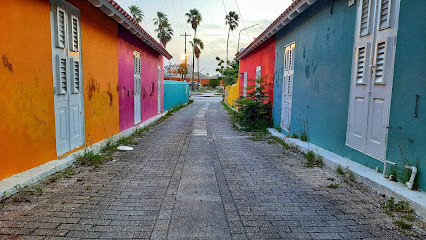
Zittende Boom
Explore the breathtaking Zittende Boom in Curaçao, a hidden gem of lush landscapes and vibrant biodiversity perfect for nature enthusiasts.

Playa Lagun-Strand
Experience the stunning beauty and tranquility of Playa Lagun-Strand, a tropical paradise in Curaçao perfect for sunbathing, snorkeling, and relaxation.
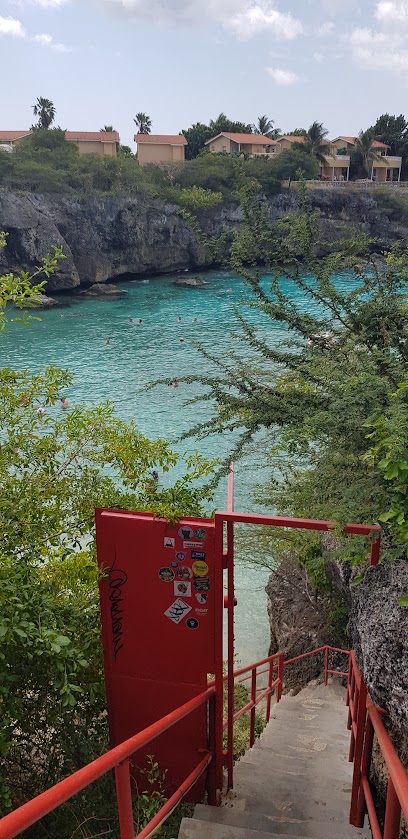
Landhuis Jan Kock
Explore the historical Landhuis Jan Kock in Jan Kok, Curaçao—an iconic heritage building showcasing the island's rich cultural legacy.

Essential places to dine
Zanzibar Beach & Restaurant
Experience culinary excellence at Zanzibar Beach & Restaurant while enjoying breathtaking ocean views in beautiful Curaçao.

De Visserij piscadera
Experience the best of Caribbean seafood at De Visserij Piscadera in Willemstad—fresh flavors, stunning views, and vibrant local culture await.
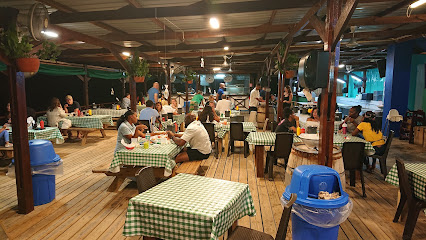
Restaurant & Café Gouverneur De Rouville
Discover Caribbean flavors at Restaurant & Café Gouverneur De Rouville in Willemstad – where every meal is a celebration of taste and hospitality.

Brisa Do Mar
Experience authentic Caribbean cuisine at Brisa Do Mar in Jan Thiel, Curaçao - where stunning views meet delicious flavors.

Christoffel National Park
Discover diverse ecosystems and breathtaking landscapes at Christoffel National Park in Curaçao—an unmissable destination for nature lovers.

Fort Nassau
Experience exquisite dining at Fort Nassau in Willemstad - where history meets culinary artistry amidst breathtaking views.

Zest Restaurant& Beach Cafe
Experience exquisite dining at Zest Restaurant & Beach Cafe in Jan Thiel, Curaçao - where culinary excellence meets stunning ocean views.

Eetcafé De Buurvrouw
Discover authentic Curaçaoan flavors at Eetcafé De Buurvrouw, where every dish tells a story amidst stunning island scenery.
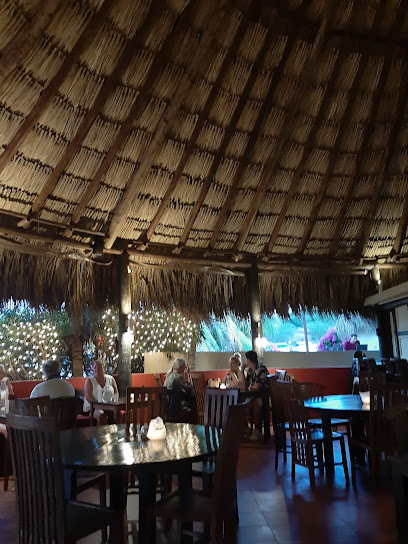
Sea Side Terrace
Experience exquisite seafood dining at Sea Side Terrace in Willemstad, where fresh flavors meet stunning ocean views for an unforgettable culinary adventure.

Restaurant Playa Forti
Discover exquisite Caribbean cuisine with breathtaking ocean views at Restaurant Playa Forti in Curaçao.

Cabana Beach Curacao
Experience sun-soaked days and vibrant nights at Cabana Beach Curacao - your ultimate beachfront getaway in Willemstad.

Jaanchie Restaurant
Experience authentic Caribbean cuisine at Jaanchie Restaurant in Sabana Westpunt, Curaçao – where every meal tells a story.

Chill Beach Bar & Grill
Experience Caribbean flavors and breathtaking views at Chill Beach Bar & Grill in Willemstad, Curaçao - your perfect beachfront dining destination.

Perla Del Mar
Discover authentic Caribbean flavors at Perla Del Mar, a vibrant restaurant in Willemstad offering exquisite dishes and refreshing drinks.

MOOD Beach Curacao
Discover paradise at MOOD Beach Curacao: where vibrant flavors meet stunning ocean views in Willemstad's coastal haven.

Markets, malls and hidden boutiques
Renaissance Mall & Rif Fort
Discover the vibrant Renaissance Mall & Rif Fort in Willemstad, a shopping paradise with rich history and diverse dining options.
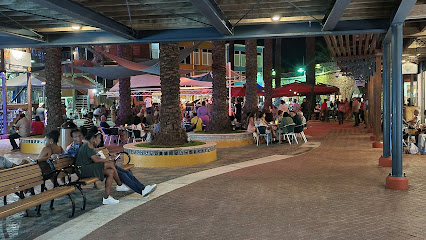
Sambil Curacao
Explore Sambil Curacao, a premier shopping mall in Willemstad offering diverse retail options, dining experiences, and entertainment for all ages.
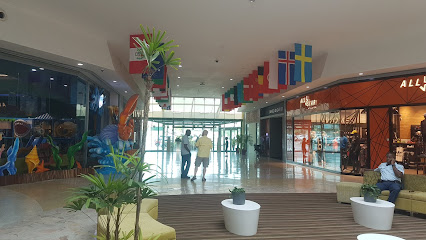
Christoffel National Park
Discover the enchanting landscapes and rich biodiversity of Christoffel National Park, a gem of Curaçao's natural heritage.

Zuikertuin Mall
Experience a blend of local charm and global brands at Zuikertuin Mall in Willemstad, Curaçao, your ultimate shopping destination.

La Curacao
Explore La Curacao in Willemstad for an unparalleled shopping experience, with a wide range of products and local treasures waiting to be discovered.

Promenade Shopping Center
Explore the vibrant Promenade Shopping Center in Willemstad, Curaçao, for a unique shopping and dining experience that captures the essence of island life.

Penha Duty Free Curacao in Punda
Explore luxury and savings at Penha Duty Free Curacao, where exquisite perfumes, cosmetics, and liquors await in the heart of Punda.

Bloempot Shopping Center
Experience the vibrant Bloempot Shopping Center in Willemstad, where shopping, dining, and local culture come together in a Caribbean paradise.

Mister & Miss Exclusive
Discover unique local and international fashion at Mister & Miss Exclusive in Willemstad, Curaçao, where style meets cultural flair.

Chichi Shop Punda
Chichi Shop Punda: Discover unique souvenirs and local crafts that embody the vibrant culture of Curacao in the heart of Willemstad.

Klein Hofje gardens
Explore the tranquil Klein Hofje Gardens in Willemstad, Curaçao, where lush landscapes and serene pathways create a perfect escape from city life.

Sweetheart Curacao
Explore Sweetheart Curacao, the ultimate toy store in Willemstad, offering a magical selection of toys and games for children and families.
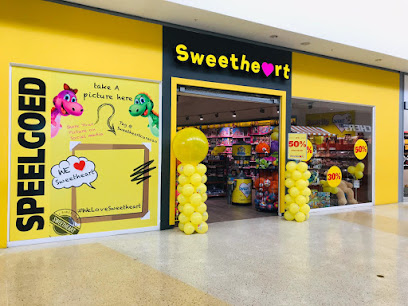
Freeport Jewelers
Immerse yourself in luxury at Freeport Jewelers, where exquisite jewelry meets unparalleled service in a vibrant shopping destination.

Jolly Fashion by Prakash
Explore the vibrant fashion scene at Jolly Fashion by Prakash in Willemstad, offering unique clothing, accessories, and a taste of Curaçao's rich culture.

Island Treasures
Explore Island Treasures in Willemstad, Curaçao for unique souvenirs and local craftsmanship that capture the island's vibrant culture.

Essential bars & hidden hideouts
Daaibooi Beach Bar
Experience the vibrant atmosphere and stunning ocean views at Daaibooi Beach Bar in Willemstad, Curaçao, where relaxation meets tropical bliss.

Shelterrock Paradise
Shelterrock Paradise: A Culinary Haven in Curaçao with Live Music and Exquisite Dishes.

Bahia Beach Bar & Restaurant
Discover Bahia Beach Bar & Restaurant - a culinary gem in Lagun, Curaçao, where stunning views meet delicious flavors in a relaxed atmosphere.
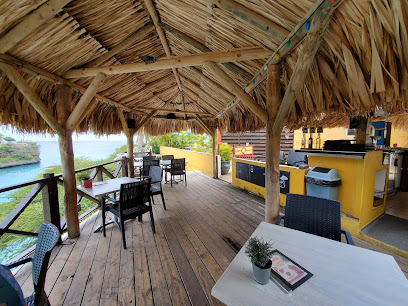
Koraal Rooftop Terrace
Discover Koraal Rooftop Terrace, a stunning culinary destination in Curaçao with breathtaking ocean views and delectable dishes.

La Fogata Terrace & Sports Bar
Experience the vibrant atmosphere and delicious grill delights at La Fogata Terrace & Sports Bar, a must-visit spot in Willemstad, Curaçao.

Curadise Bar Restaurant
Experience the vibrant nightlife of Willemstad at Curadise Bar Restaurant, where tropical flavors and lively ambiance await you.

The World Best Mojito Bar
Discover the vibrant flavors of Curaçao at The World Best Mojito Bar, home to the finest mojitos in the Caribbean.

Cast away beach bar curacao
Discover the charm of Cast Away Beach Bar in Curaçao, where stunning ocean views and delicious food create the perfect tropical escape.

The Hills
Discover The Hills in Willemstad - a perfect blend of vibrant nightlife and serene lodging in the heart of Curaçao.

BAR P Curaçao
Discover the vibrant nightlife of Willemstad at BAR P Curaçao, where creative cocktails and local charm await you.

Rif fort bar
Rif Fort Bar: A historic bar in Willemstad offering stunning views, delicious drinks, and a vibrant atmosphere perfect for relaxation.

Wikki Cafe
Experience the vibrant spirit of Willemstad at Wikki Cafe, where refreshing drinks and local culture come together in a lively atmosphere.

Tabú Bar & Bites Curacao
Discover the vibrant atmosphere of Tabú Bar & Bites Curacao, where creative cocktails and delightful bites create unforgettable memories.

Love Coco f.i.u
Discover Love Coco f.i.u, the vibrant bar in Grote Berg, Curaçao, where local culture meets refreshing drinks in a lively atmosphere.

Bow di palu snack
Discover the flavors of Curaçao at Bow di Palu Snack, where local culture meets a laid-back bar experience in Jan Donker.

Local Phrases about Christoffel National Park
-
- HelloBon dia
[bon dee-ah] - GoodbyeAyo
[ah-yo] - YesSi
[see] - NoNo
[no] - Please/You're welcomePor fabor
[por fah-bor] - Thank youDanki
[dahn-kee] - Excuse me/SorryPardon
[par-don] - How are you?Kon ta bai?
[kon tah by] - Fine. And you?Bon. I boso?
[bon. ee boh-soh?] - Do you speak English?Bo ta papia Ingles?
[boh tah pah-pee-ah een-glees?] - I don't understandMi no ta kompronde
[mee noh tah kohm-prohn-deh]
- HelloBon dia
-
- I'd like to see the menu, pleaseMi ke mira e menu, por fabor
[mee keh mee-rah eh meh-noo, por fah-bor] - I don't eat meatMi no kome karni
[mee noh koh-meh kahr-nee] - Cheers!Salud!
[sah-lood] - I would like to pay, pleaseMi ke paga, por fabor
[mee keh pah-gah, por fah-bor]
- I'd like to see the menu, pleaseMi ke mira e menu, por fabor
-
- Help!Yuda!
[yoo-dah] - Go away!Bai bek!
[bahy behk] - Call the Police!Yama polis!
[yah-mah poh-lees] - Call a doctor!Yama un dokter!
[yah-mah oon dohk-tehr] - I'm lostMi a perde mi mes
[mee ah pehr-deh mee mehs] - I'm illMi ta malu
[mee tah mah-loo]
- Help!Yuda!
-
- I'd like to buy...Mi ke kumpra...
[mee keh koom-prah...] - I'm just lookingMi ta mira solamente
[mee tah mee-rah soh-lah-men-teh] - How much is it?Kuantu e ta kosta?
[kwan-too eh tah koh-stah?] - That's too expensiveEsaki ta muchu karo
[eh-sah-kee tah moo-choo kah-roh] - Can you lower the price?Bo por baha e preis?
[boh poor bah-hah eh prei?]
- I'd like to buy...Mi ke kumpra...
-
- What time is it?Kuantu ora e ta?
[kwan-too oh-rah eh tah?] - It's one o'clockE ta un ora
[eh tah oon oh-rah] - Half past (10)Mitad di diez
[mee-tahd dee dee-ehs] - MorningMarduga
[mahr-doo-gah] - AfternoonAtardi
[ah-tahr-dee] - EveningAnochi
[ah-noh-chee] - YesterdayAyera
[ah-yeh-rah] - TodayAwe
[ah-weh] - TomorrowMañana
[mah-nyah-nah] - 1Un
[oon] - 2Dos
[dohs] - 3Tres
[trehs] - 4Kuater
[kwa-ter] - 5Sinku
[seen-koo] - 6Sies
[sees] - 7Siete
[syeh-teh] - 8Ocho
[oh-cho] - 9Nuebe
[nweh-beh] - 10Diez
[dee-ehs]
- What time is it?Kuantu ora e ta?
-
- Where's a/the...?Unda tin un/e...
[oon-dah teen oon/eh...] - What's the address?Kua ta e adres?
[kwah tah eh ah-drehs?] - Can you show me (on the map)?Bo por mustra mi (riba e mapa)?
[boh poor moos-trah mee (ree-bah eh mah-pah)?] - When's the next (bus)?Kuando ta bini e siguiente (bus)?
[kwan-doh tah bee-nee eh see-gwee-ehn-teh (boos)?] - A ticket (to ....)Un tikit (pa ....)
[oon tee-kit (pah ....)]
- Where's a/the...?Unda tin un/e...
History of Christoffel National Park
-
Long before European settlers arrived, the Arawak and Caiquetio peoples inhabited the area that is now Christoffel National Park. These indigenous communities were skilled in fishing, hunting, and agriculture. Evidence of their presence includes various artifacts such as pottery, tools, and petroglyphs found within the park.
-
In the 17th century, the Dutch West India Company established plantations on the island of Curaçao. The land that is now Christoffel National Park was part of several large plantations, including Savonet, Zorgvlied, and Zevenbergen. These plantations primarily produced goods like divi-divi pods, used in tanning leather, and dyewood.
-
The Savonet Plantation House, dating back to 1662, is one of the oldest and best-preserved plantation houses in Curaçao. It served as the main residence for the plantation owners and has now been converted into a museum. The museum offers insights into the life on the plantation, including the history of enslaved individuals who worked there.
-
In the mid-20th century, there was a growing awareness of the need to preserve Curaçao's natural heritage. This led to the establishment of Christoffel National Park in 1978. The park protects a diverse range of flora and fauna, including several species endemic to the island, such as the Curaçao white-tailed deer and the rare Palabrua tree.
-
Christoffel National Park is not only rich in natural beauty but also holds cultural significance for the people of Curaçao. The park is home to several historical sites, including old plantation ruins and wells, as well as ancient rock paintings left by the indigenous people. These cultural artifacts provide a glimpse into the island's diverse history.
-
Today, Christoffel National Park is a major tourist attraction, offering visitors the chance to explore its rugged landscapes, historical sites, and diverse ecosystems. Hiking trails lead to the summit of Mount Christoffel, the highest point on the island, providing panoramic views of the surrounding area. The park also hosts educational programs and guided tours to promote awareness of its historical and ecological significance.
Christoffel National Park Essentials
-
Christoffel National Park is located on the northwestern part of Curaçao. The nearest international airport is Hato International Airport, approximately 30 kilometers away. From the airport, you can rent a car, take a taxi, or use a shuttle service to reach the park. The journey typically takes around 45 minutes by road, depending on traffic conditions.
-
Once you reach Christoffel National Park, the best way to explore it is by car. The park has several driving trails that allow you to access different parts of it. Guided tours are also available for those who prefer not to drive. Biking and hiking are popular ways to explore the park’s trails and scenic spots. Public transportation is limited, so renting a car is highly recommended for convenience.
-
The official currency in Curaçao is the Netherlands Antillean Guilder (ANG), but U.S. dollars are widely accepted. Credit cards are accepted at most hotels, restaurants, and larger shops. However, it's wise to carry some cash for entrance fees and smaller purchases within the park. ATMs are available in nearby towns, so withdraw sufficient cash before heading to the park.
-
Christoffel National Park is generally a safe destination for tourists. However, it is advisable to take standard precautions. Avoid leaving valuables in your car and always keep an eye on your personal belongings. Be cautious while hiking and stick to marked trails to avoid getting lost. While Curaçao has some high-crime areas, the park itself is considered safe. Nevertheless, remain vigilant and avoid isolated areas, especially at night.
-
In case of emergency, dial 911 for immediate assistance. The park has rangers and staff who can help with minor issues and first aid. It's recommended to have travel insurance that covers medical emergencies. For more serious medical issues, the nearest hospital is in Willemstad, about a 45-minute drive from the park. Make sure to carry a basic first-aid kit and keep emergency contact numbers handy.
-
Fashion: Do wear comfortable, lightweight clothing suitable for outdoor activities. Don't forget to bring a hat and sunscreen. Religion: Do respect local customs and traditions. When visiting religious sites, dress modestly. Public Transport: Public transport options are limited; renting a car is recommended. Greetings: Do greet people with a friendly 'Bon dia' (good morning) or 'Bon tardi' (good afternoon). Eating & Drinking: Do try local delicacies and always stay hydrated. Don't litter; always use designated trash bins.
-
To experience Christoffel National Park like a local, consider visiting early in the morning when the weather is cooler and the park is less crowded. Engage with park rangers who can provide valuable insights and tips. Participate in guided tours to learn about the park's flora, fauna, and historical sites. Don't miss the opportunity to climb Christoffel Mountain for a panoramic view of the island. Also, visit the Savonet Museum to understand the historical significance of the area.
Nearby Cities to Christoffel National Park
-
Things To Do in Westpunt
-
Things To Do in Barber
-
Things To Do in Soto
-
Things To Do in Sint Michiel
-
Things To Do in Julianadorp
-
Things To Do in Willemstad
-
Things To Do in San Nicolas
-
Things To Do in Savaneta
-
Things To Do in Santa Cruz
-
Things To Do in Pos Chiquito
-
Things To Do in Paradera
-
Things To Do in Sero Blanco
-
Things To Do in Tanki Leendert
-
Things To Do in Oranjestad
-
Things To Do in Noord









